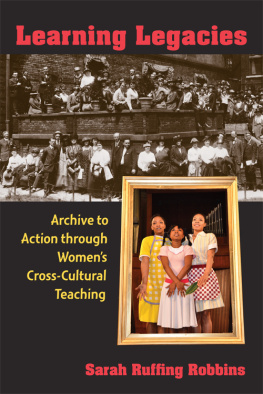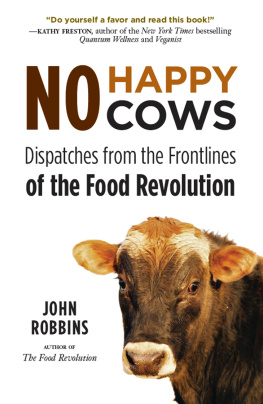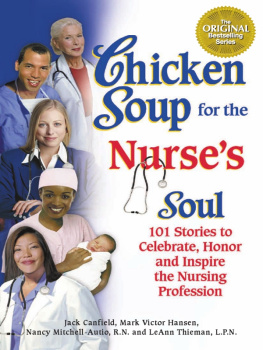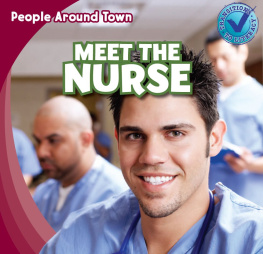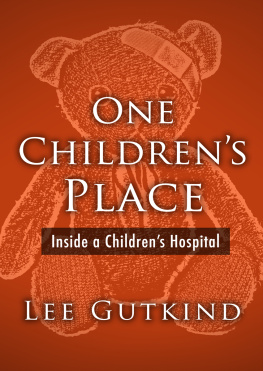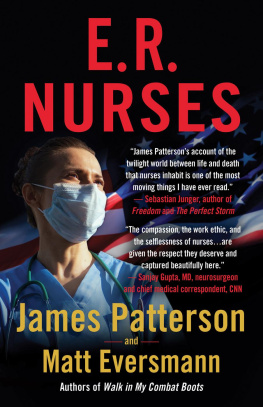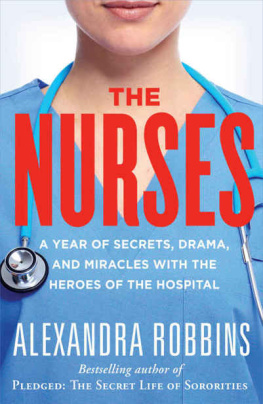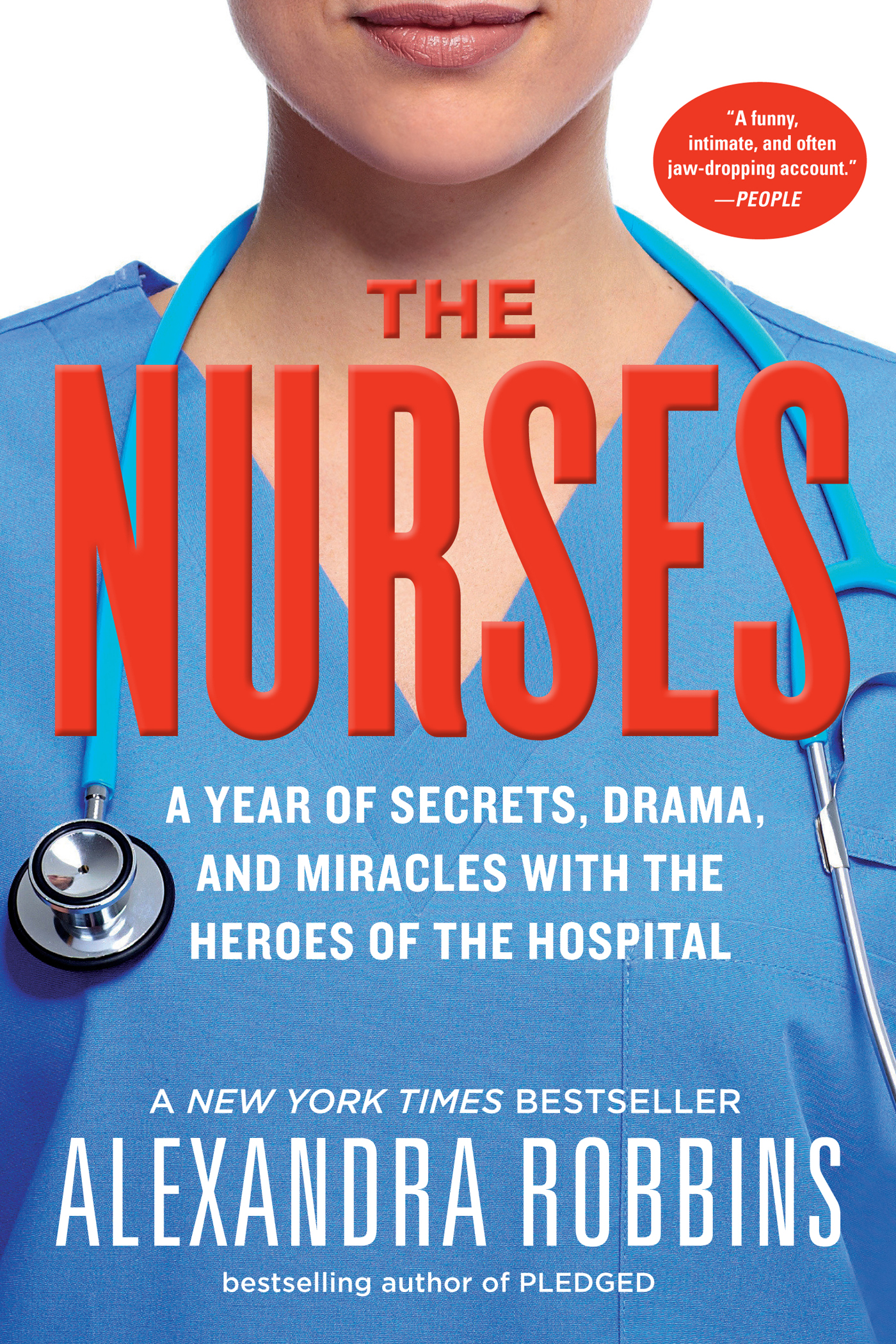The Nurses
A Year of Secrets, Drama, and Miracles with the Heroes of the Hospital
Alexandra Robbins
Workman Publishing
New York
To my family, past and present, with love
Contents
What Its Really Like to be a Nurse:
The Joy and Heartbreak of the Secret Club
Crossing Doctor-Nurse Lines:
How the Sexy-Nurse Stereotype Affects Relationships with Doctors and Patients
Who Protects the Nurses?
Taking Care of People Who Punch You in the Face
When Nurses Bully Nurses:
Hierarchies, Hazing, and Why They Eat Their Young
Burnt to a Crisp:
How Nurses Copeand Why Some Crack
The Stepford Nurse:
How Hospitals Game the System for Patient Satisfaction
The Code of Silence:
Painkillers, Gossip, and Other Temptations
Dont Get Sick in July:
Nurses SecretsWhat Patients Need to Know About Their Hospitals and Their Health
What Makes a Hero:
Why Nurses Do What They Do
What You Can Do:
Advice and Inspiration for the Public, Patients, Families, Nurses, Aspiring Nurses, Managers, and Others
Preface
I t is astonishing that in the twenty-first century, nurses must continue to battle not only for respect but also for the right to speak.
In a segment about the talent portion of the 2015 Miss America pageant, for example, two cohosts of The View mocked Miss Colorado, Kelley Johnson, the pageants second runner-up. For her talent, Johnson, valedictorian of her nursing school class, appeared in her scrubs and sneakers (common nurse footwear, but you have to admire a pageant contestant who wears sneakers) and delivered a moving monologue about how her work with an Alzheimers patient reminded her that she is more than just a nurse.
The next day, Michelle Collins, cohost of The View, laughingly insinuated that Johnson wasnt talented, and Joy Behar, watching a clip, asked, Why does she have a doctors stethoscope?
While The View segment likely was intended to poke fun at the pageant, the hosts were deeply misguided in their choice of subject to denigrate. Its mind-boggling to suggest that, say, pageant singing or bikini-wearing are more valuable talents than saving lives and giving hope. Here was a contestant who, rather than take the safe route with a traditional talent (shes also a pianist), used her brief moment in the national spotlight to warmly pay tribute to a vital profession.
Nurses quickly went after The View with a change.org petition and a #NursesUnite hashtag went viral. Later that week, the cohosts issued a nonapology, claiming their comments were taken out of context and suggesting that angry nurses heard them wrong. Did they hear the conversation? Raven-Symon wondered. Whoopi Goldberg cautioned the audience to better listen to the show.
Nurses heard them loud and clear over the beeps of the monitors, the demands of their administrations, and the moans of the patients they were tending. Its a nurses job to listen. Thats what they use their stethoscopes for. And by the way, nurses use stethoscopes more often than doctors do.
Whether or not the cohosts slights were intentional, their comments reflect a general misunderstanding of and disrespect for what exactly nurses do. I wrote this book partly to correct those misperceptions. Its the public who must now listen to nurses. Because in many cases what nurses have to say could save our lives.
One of the most important things that nurses have been trying to tell us is that rampant nurse understaffing is causing patients to suffer. California is the only state in the country with hospital-wide safe-staffing nurse-to-patient ratio laws, which means that in any other state and the District of Columbia, hospitals can overload nurses with more patients than the safe maximum. And far too many do. Since the original hardcover publication of this book, nurses continue to report offenses. In a 2015 survey of Massachusetts nurses, 25 percent said that understaffing was directly responsible for patient deaths, 50 percent blamed understaffing for harm or injury to patients, and 85 percent said that patient care is suffering because of the high numbers of patients assigned to each nurse.
Why hasnt there been public uproar over such a glaring cause of preventable deaths and harm? It seems that some hospitals are silencing nurses who try to spread the word. According to the New York State Nurses Association, in 2015 Jack D. Weiler Hospital (of the Albert Einstein College of Medicine) in New York threatened nurses with arrest, and even escorted seven nurses out of the building because, during a breakfast to celebrate National Nurses Week, the nurses discussed staffing shortages. (A spokesman for the hospital disputed this characterization of the events.)
Its not unusual for hospitals to threaten and intimidate nurses who speak up about understaffing, said Deborah Burger, copresident of National Nurses United, the countrys largest union of registered nurses. It happens all the time, and nurses are harassed into taking what they know are not safe assignments. The pressure has gotten even greater to keep your mouth shut. Nurses have gotten blackballed for speaking up. Theyre considered troublemakers because its bad for business. It can be cutthroat.
Its appalling that some hospitals are not only refusing to hire enough nurses to treat patients properly but also muffling the nurses who protest. Nurses are patient advocates. They try to spread awareness of these issues because they want to provide better patient care.
The landscape hasnt always been so alarming. But as the push for hospital profits has increased, important matters such as personnel count, most notably nurses, have suffered. Every day in every hospital in our state and probably throughout the nation, [hospitals] are deliberately putting patients in danger, said David Schildmeier, a spokesman for the Massachusetts Nurses Association. Hospitals are ignoring the research and patients are suffering greatly. The biggest change in the last five-to-ten years is the unrelenting emphasis on boosting their profit margins at the expense of patient safety, lives, and the well-being that their mission calls upon them to provide. Absolutely every decision is made on the basis of cost savings.
The research referenced in The Nurses clearly shows that increasing nurse staffing leads to better patient outcomes. But experts have said that many hospital administrators assume the studies dont apply to them and fault individuals, not the system, for negative outcomes. They mistakenly believe their staffing is adequate, said Judy Smetzer, vice president of the Institute for Safe Medication Practices, a consumer group. Its a vicious cycle. When theyre understaffed, nurses are required to cut corners to get the work done the best they can. Then when theres a bad outcome, hospitals fire the nurse for cutting corners.
As this book illustrates, nurses are the key to improving American healthcare. Nurses are unsung, underestimated, underappreciated heroes who are needlessly overstretched, overlooked, and overdue for the kind of recognition befitting champions. Dont silence them. Honor them. Because Johnson is right: No nurse is just a nurse. We couldnt survive without them. And it takes a heck of a lot more talent to earn the scrubs and stethoscope than it does to mock a hero.
Alexandra Robbins
January 2016
Prologue
F our hospitals stand within a fifty-mile radius of a major American city. On the surface, they are as different from one another as fairy-tale sisters.
Pines Memorial Hospital is a pleasant-looking cream-colored building with a sixteen-story tower and broad, welcoming windows overlooking a quiet tree-lined suburban avenue. After decades of independence, the neighborhoods favorite hospital was bought out by Westnorth, a large healthcare corporation, which is slowly diluting the local flavor. With 190 beds, Pines Memorial serves a highly educated, wealthy population with a large percentage of academics, retirees, and nursing home residents. Because it is close to a major highway, Pines emergency room, which has approximately 60,000 visits per year, often treats victims of major-impact car accidents. Nurses joke that the hospital should be called Highway Memorial, because the risks of the highway are far more relevant to the medical staff than the quiet red pine forests outside of town.




